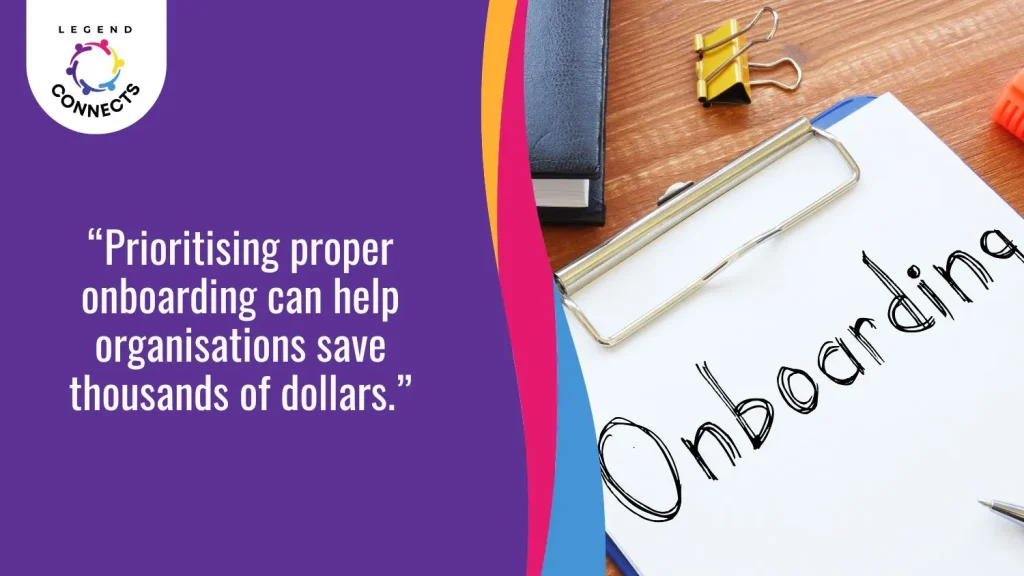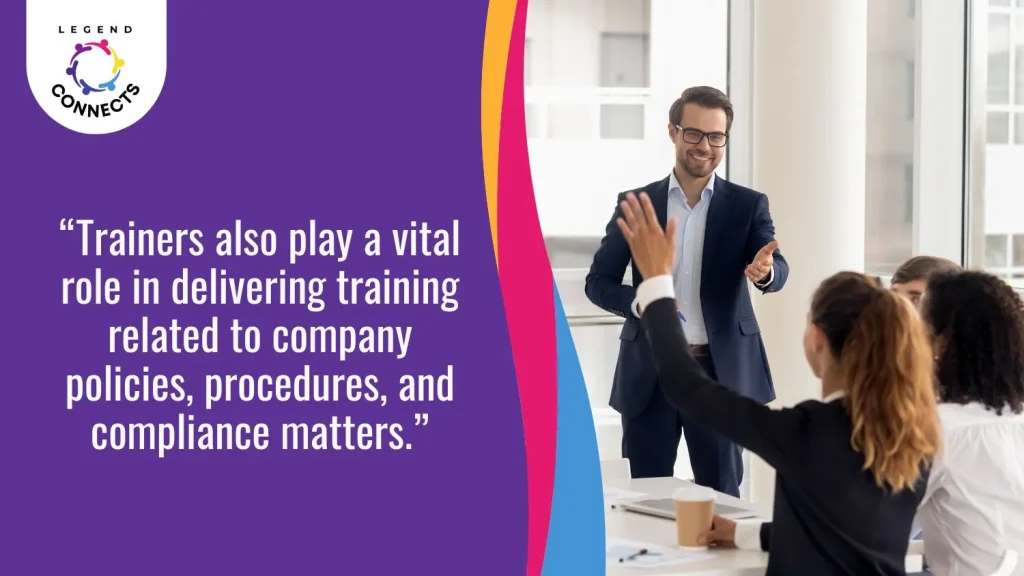
What Is Virtual Customer Service?
Virtual customer services mean offering complete support teams to businesses, from agents to management. This service has become an effective way for businesses to tackle their customer service duties for
Get Free Consultation: +44 330 236 9335

Any human resources department can find the employee onboarding process challenging and time-consuming. Nevertheless, this procedure is critically important and can establish the groundwork for your organisation’s and its employees’ long-term success.
This article aims to guide you and your team in structuring and simplifying the onboarding process to facilitate the smooth integration of new employees while following different onboarding checklists and timelines.
The employee onboarding process includes everything needed when new employees start work. This involves completing paperwork, setting up workstations and computer access, communicating role expectations, and making social introductions to help new employees succeed in their new company.

The process starts with accepting an employment offer, continues through the waiting period, the employee’s first day, any orientation period, and sometimes extends throughout the first year of employment.
The difference between induction and onboarding is that induction is the initial phase of welcoming new employees, while onboarding is a more extensive process that includes the entire employee journey.
Orientation is a one-time event that familiarises new employees with the organisation’s structure, policies, and immediate job expectations. Onboarding, on the other hand, is an ongoing process that continues for an extended period after orientation. It focuses on integrating new hires and helping them adapt to their roles and responsibilities more effectively.
Reboarding is the process of reintroducing employees to the company, their role, and the culture after a significant absence or change in responsibilities. This is a major step that is often overlooked. Reboarding requires many of the same elements as the initial onboarding but in an accelerated format. It quickly reintegrates employees and gets them up to speed so they can thrive in their roles.
Effective onboarding is crucial for a new employee’s experience with your organisation. It provides the first impression of how your company operates and treats its staff. An organisation with a good onboarding process can attract and keep great employees, encourage top-notch performance, and help new hires get used to the company’s systems and culture.
When onboarding a new employee, it’s important to guide parking, dining options, job expectations, available support, and company culture. Setting clear expectations helps the employee understand their role from day one.
The more effective the onboarding process, the faster your new employee can settle down and be productive. If your program is inefficient or confusing, your employee will spend their initial weeks asking questions to which they should already have answers. Set them up for success with clear onboarding materials that address all their questions about their role or the company.
Engaged employees positively impact productivity, profitability, and product quality. When employees are engaged, the company values them, recognises their skills, and is committed to supporting their professional growth. According to 53% of HR professionals, effective onboarding leads to engaged employees, which can positively influence their careers with the company.
Understanding the importance of effective onboarding in employee retention is crucial. Statistics show that about 1/3 of employee turnover happens within the first 90 days due to poor onboarding processes. It’s worth noting that replacing an employee can cost up to 150% of their annual salary, including hiring and training expenses, as well as a decrease in productivity and morale.

Setting the tone from day one helps build a strong company culture where employees feel valued, supported, and nurtured. This approach ensures that new employees feel welcomed and existing employees see the value placed on the workforce. Clear communication of company values is crucial.
Creating an onboarding process that meets all of the aforementioned criteria and works well for your organization can be a great challenge, especially for an HR department that already has its hands full with a laundry list of other day-to-day tasks. The following steps can help you create an onboarding process that fits the needs of your business and your current and future employees.
The onboarding process can be done manually, but many human resources departments have found it much easier after implementing onboarding software. This software automates steps and consolidates principal elements into one central location. Using onboarding software can reduce the workload of HR personnel and create an engaging and optimised experience for new employees. Diverse options are available for onboarding software, so reviewing them carefully and selecting the one that best suits your team is important.
New employees will complete paperwork, workplace introduction, and training during onboarding. Training will include modules and mentoring, with the duration adjusted based on performance. The process should last at least six months, ideally through the first year, with regular check-ins and evaluations. Experts recommend follow-ups throughout the first year for successful integration.
It’s important to plan for the time between hiring someone and their start date. An onboarding checklist can help manage administrative tasks and make the new employee’s first day less stressful. Share day-one instructions and information with the new employee and inform the existing team about the new addition. This preparation can help make the transition smoother for everyone.
Employee onboarding is a crucial process that sets the foundation for a new employee’s success. It involves paperwork, workstation setup, role communication, and integration into the company culture. A well-executed onboarding process can lead to higher productivity, employee engagement, retention, and a positive company culture.
It’s important to differentiate between onboarding, orientation, and induction and consider reboarding processes for employees returning to the organisation. Effective onboarding can be challenging, but it is essential for the long-term success of the company and its employees.
During the first week of employment, it’s essential to communicate job descriptions, expectations, performance goals, and workplace culture to new employees. This provides confidence, reduces confusion, and minimises stress. Job expectations should be in writing, and employees should have the opportunity to ask questions.
Goals should be SMART, and employees should understand how and when they are evaluated. Explaining the workplace culture during the first few days shows that your company is transparent, honest, and knows its values.
Remember to meet with your new employee regularly during their onboarding process. Providing ongoing feedback and support is essential. Use trackable metrics to assess performance and schedule one-on-one meetings to discuss progress. This will help you understand how the employee is doing and anticipate their future performance.
Consistent support and feedback throughout the first year can boost retention and job satisfaction. Employees who feel supported and valued are more likely to stay and be productive.
Not every onboarding plan will be perfect, especially if it’s your company’s first onboarding experience or you are trying a new process or software. Keep track of what has worked well and what hasn’t, and adjust your strategy accordingly.
Some HR departments may find that their plan should vary based on the employee’s personality, while others may discover that a standard process works best. Both are legitimate strategies. Ultimately, do what works best for your organisation and don’t be afraid to make changes for the benefit of all involved.
When it comes to onboarding new employees, there are certain best practices that every company should heed before starting the onboarding process. Here are the best practices that should be considered when hiring employees.
A comprehensive, written onboarding checklist is crucial for ensuring a smooth transition for new employees. It covers administrative tasks, training, and orientation programs, consistently supporting all new hires. This checklist also serves as a guide for HR personnel and managers to ensure no steps are overlooked.
Developing and sharing a clear job description with all applicants during the hiring process is crucial. This helps ensure that only candidates with the necessary skills and abilities for the role are considered for the position.
When choosing the right candidate, it’s important to ensure that they possess a positive and welcoming attitude. This will establish a positive atmosphere for the new employee and make them feel valued and appreciated in their new environment.
When creating the onboarding plan, include introductions to all the various departments, including product development, marketing, human resources, and sales. It is important to involve departments beyond the new hire’s own, as this will help the new employee identify points of contact within the company and better understand its structure.
Upon entering a new office, encountering an unclean workspace can make a person feel unwelcome or as if the company is unprepared for their arrival. The same principle applies to paperwork – having everything ready will demonstrate that this person has been anticipated and is already considered a valued team member.
Please notify the team about the new employee through email or during a staff meeting. Creating a warm welcome for the new hire is important, as well as organising a welcome lunch or another introductory event. The first day is crucial in setting a positive tone for their employment, so it’s essential to ensure that the new hire feels genuinely welcomed.
Regular check-ins at specific intervals will help management track the onboarding process, which can be assumed to be a year. Ensuring the employee is on track and addressing any issues will improve employee retention rates.
It is essential to have clear goals for your employees. Without clear goals, your employees may not know what is expected, leading to confusion and potential underperformance. Setting clear and achievable goals creates a path for your employees to follow and ensure they understand your expectations. Take the time to sit down with your employees and set short-term (one week), medium-term (one month and six months), and long-term (one year) goals, and discuss how these goals can be reached.
We cannot emphasise how important this step is! Your new employee brings fresh eyes and recent experiences from other companies. You should listen to their feedback about your business, processes, and everything they have encountered during their onboarding experience. This insight is extremely valuable, so don’t miss out on it.
Please ensure that the supervisor holds this meeting before the probation period ends. Also, don’t forget to schedule a ‘feelings check’ with HR 45 days after the new hire starts. Both of these discussions allow the new hire to ask questions, address any concerns, and receive support from the company.
Ask employees to introduce themselves and create a “friend book” to share information about themselves, such as their roles, interests, and hobbies. This will help employees get to know each other better and connect with colleagues with similar interests, especially new employees.
The first 90 days of onboarding are crucial for new employees as they provide the necessary tools and experiences for acclimating to their new role and the company culture. They undergo orientation and training and build relationships with coworkers, which impacts their long-term engagement and productivity.
The day before the first day should ensure that everything is ready for the new employee’s arrival. Here are the steps to take:
The first day of onboarding is crucial to setting the tone for the rest of the onboarding process. Here are the steps to take:
The first week is critical for ensuring the new employee gets up to speed with their role and the company’s processes. Here are the steps to take:
The first three months should be spent ensuring the new employee is fully integrated into their role and team. Here are the steps to take:
Onboarding is a critical process involving various organisational stakeholders, from HR to managers, colleagues, and mentors. Each role is important in ensuring a smooth transition and the successful integration of new employees.
Let’s examine the roles and responsibilities of each of these individuals during the onboarding process.
The HR department is key to the onboarding process. It manages administrative tasks, creates training materials, and ensures a smooth integration of new employees.
Trainers and specialists are essential for providing job-specific training and orientation to new employees, ensuring they have the skills and knowledge needed to excel in their roles from day one.

The manager’s role in onboarding is crucial. They provide guidance, set clear expectations, and offer continuous feedback to new employees, fostering a positive work environment. This support significantly contributes to the success and satisfaction of new employees.
The support of co-workers during onboarding is crucial. They help new employees feel valued and included, fostering a sense of belonging. Friendly colleagues make it easier for newcomers to integrate into the team by providing guidance and sharing insights from their experience.
Executives and top-level management play a crucial role in onboarding, signalling the company’s commitment to new employees and reinforcing its values. Their involvement through welcome messages, sharing experiences, and expressing expectations sets a positive tone for the importance of onboarding.
Assigning a mentor or friend to new hires is an effective way to help them integrate into the organisation. Mentors provide guidance, share insights, and help navigate the company culture, accelerating the learning curve and boosting new employees’ confidence and job satisfaction.
Several types of employees require tailored onboarding programs to meet their unique needs. Let’s look at the main differences in onboarding for executives, managers, remote workers, freelancers, and deskless workers.
A tailored approach reflects the significance of their roles within the organisation, emphasising the company’s vision, mission, and strategic objectives. Building relationships with key stakeholders, familiarising them with the leadership team, and providing executive mentors for smooth assimilation.
Introduction to company policies and procedures emphasises developing managerial skills, communication abilities, and understanding the organisation’s structure, departmental goals, and team dynamics. Tailored training on people management, goal setting, and performance evaluation.
Comprehensive virtual approach, clear communication channels, virtual introductions to team members, and technology training to promote inclusion and connectivity.
Streamlined process with clear contractual agreements, project expectations, and communication guidelines. Access to relevant company resources and a designated point of contact for queries.
Direct and safety-focused approach, comprehensive training on job-specific tasks, safety protocols, and equipment operation. Engaging supervisors and mentors to guide new diskless employees, ensuring effective use of frontline employee onboarding software for a smooth experience.
Onboarding is the process of introducing and integrating new employees into an organisation. During the initial period, it covers legal paperwork and ongoing support.
The five Cs of onboarding include compliance, clarification, culture, connections, and checkback for follow-ups.
The duration of onboarding varies among organisations, but the most extensive programs typically span the entire first year of employment.
A well-structured and effective employee onboarding process is crucial for the success of both the organisation and its new employees. It sets the stage for long-term productivity, engagement, and retention. By providing comprehensive support, clear expectations, and a positive initial experience, companies can ensure that new employees integrate smoothly and contribute meaningfully to the organisation.

Virtual customer services mean offering complete support teams to businesses, from agents to management. This service has become an effective way for businesses to tackle their customer service duties for

Talent sourcing, or candidate sourcing, is a talent acquisition discipline. Its primary focus is generating a consistent pool of professionals to fill open positions in a company quickly. The process

Any human resources department can find the employee onboarding process challenging and time-consuming. Nevertheless, this procedure is critically important and can establish the groundwork for your organisation’s and its employees’